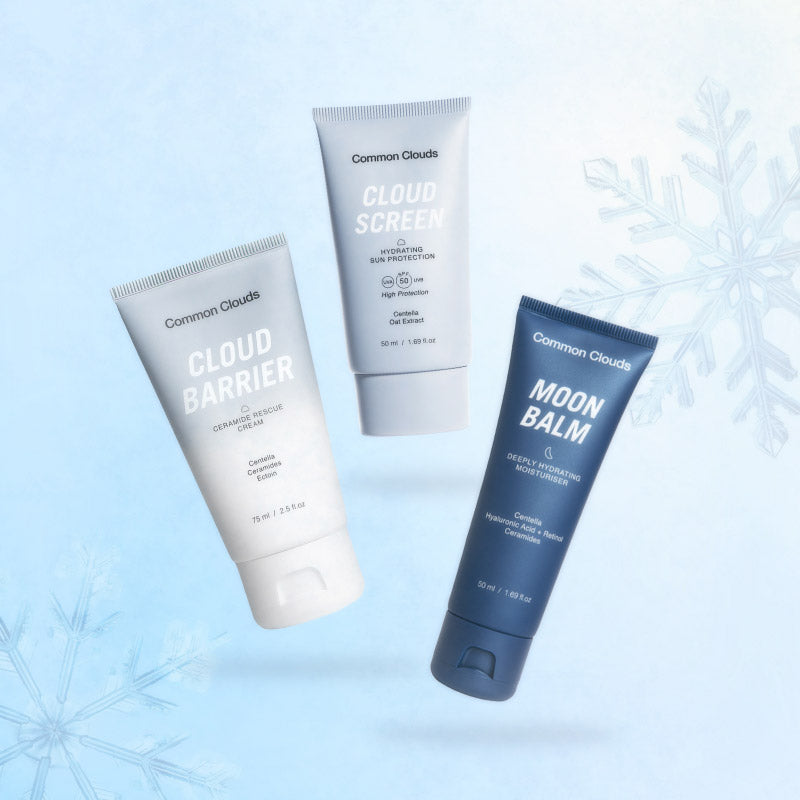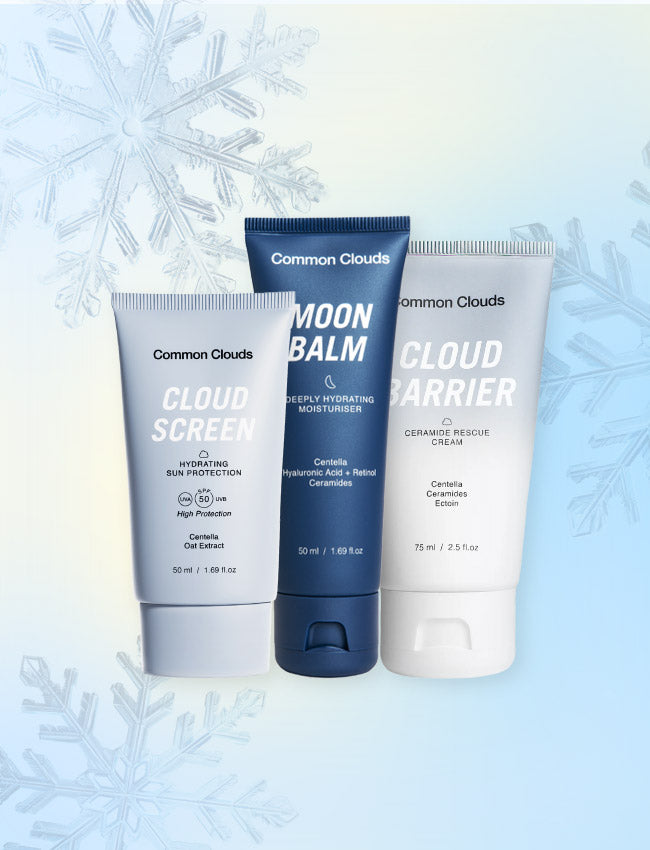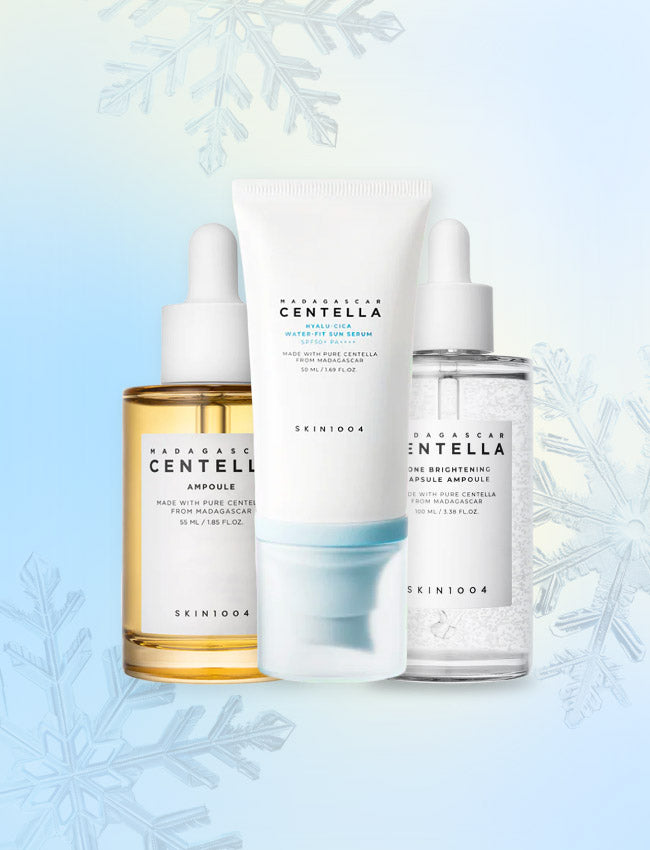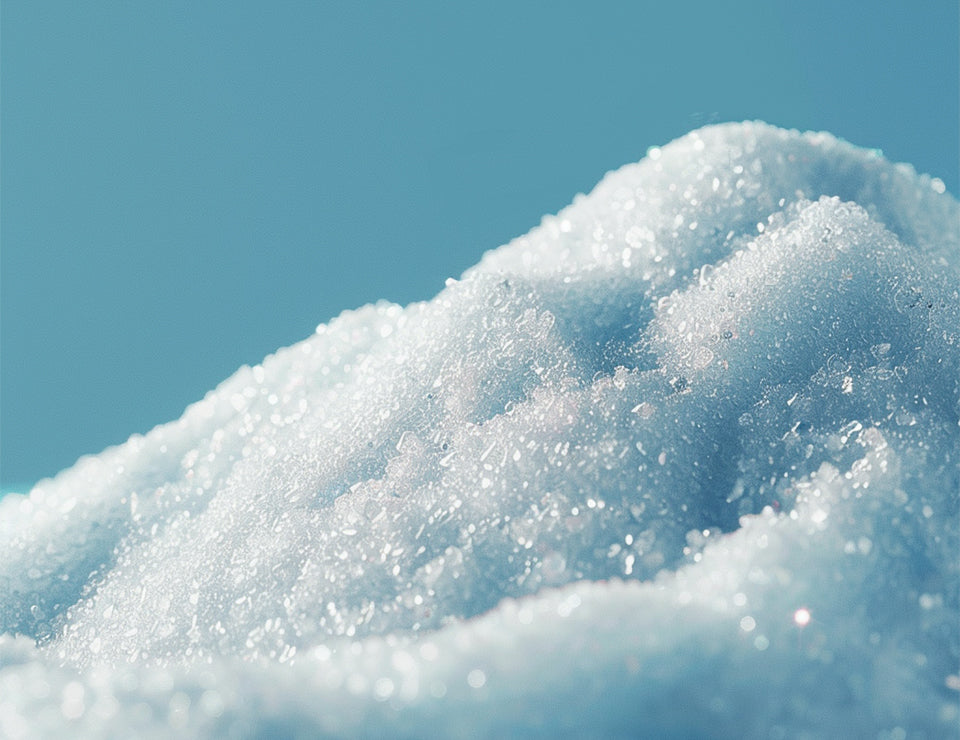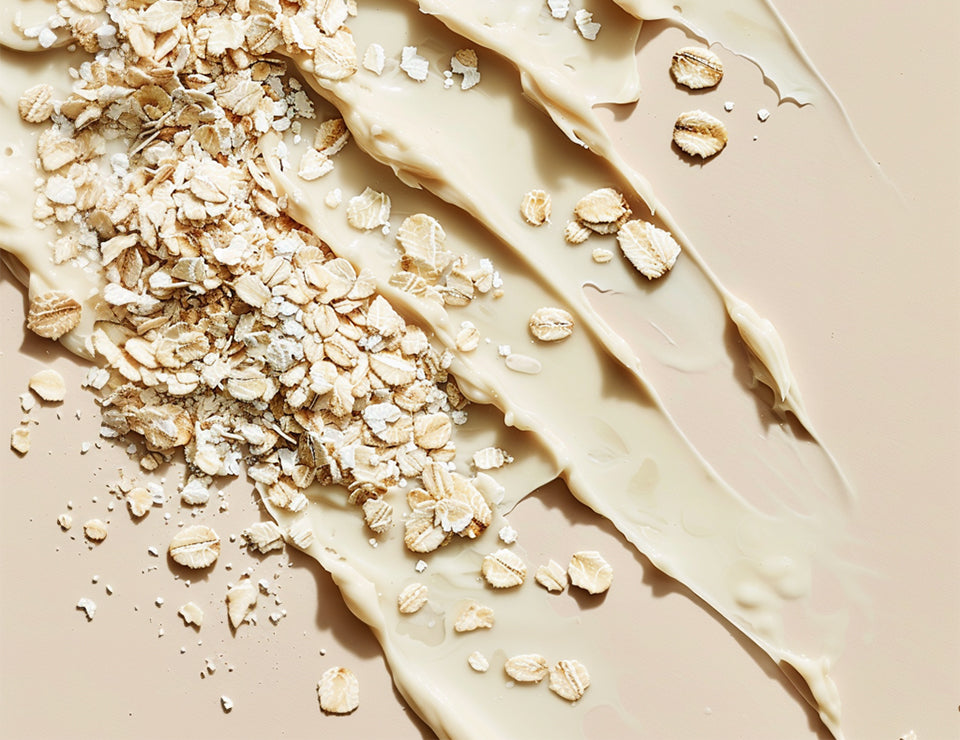Ceramides at a Glance
- Production: They can be derived naturally from plants or synthetically manufactured.
- Effect on the Skin: They strengthen the skin barrier, reduce moisture loss, and improve skin elasticity.
- Beneficiaries: Especially beneficial for dry, sensitive, or aging skin, as well as skin with eczema or psoriasis.
- Interesting Fact: Ceramides make up about 50% of the lipids in the skin barrier.
- Also Known As: Sphingolipids, Ceramide NP, AP, AS, NS, EOP.
The Effects of Ceramides
Ceramides play a central role in skincare through several mechanisms:
1. Skin Barrier and Moisture
Ceramides are key components of the lipid barrier of the skin, forming a "mortar" layer that holds the "bricks" (corneocytes) together along with cholesterol and fatty acids. This structure prevents transepidermal water loss (TEWL) and protects the skin from external environmental influences. Studies show that the topical application of ceramide-containing products can significantly increase skin hydration and reduce TEWL. This means that the skin can retain more moisture and is protected from drying out. A well-functioning skin barrier is crucial for protecting the skin from harmful environmental factors such as pollutants, bacteria, and allergens.
They also help maintain the integrity of the skin barrier by stabilizing the corneodesmosomes, which hold the corneocytes together. This is particularly important to ensure the mechanical strength of the skin and prevent the penetration of microorganisms. The loss of ceramides in the skin can lead to a weakened barrier, which is often observed in skin conditions such as eczema and psoriasis.
2. Anti-Aging Effects
As we age, the ceramide content in the skin decreases, leading to a weaker skin barrier and increased dryness. Restoring ceramides in the skin can improve barrier function, increase moisture, and reduce the appearance of fine lines and wrinkles. This is achieved by supporting the natural lipid barrier, making the skin appear smoother and firmer. Studies have shown that the use of ceramide-containing products improves skin structure and reduces the appearance of signs of aging.
The aging of the skin is often accompanied by a loss of natural moisturizing factors (NMF) that bind water in the skin. Ceramides help preserve these moisturizing factors and increase skin hydration. Additionally, they promote the production of collagen and elastin, which improves skin elasticity and firmness, thus helping to reduce wrinkles.
3. Treatment of Skin Conditions
- Atopic Dermatitis: Patients with atopic dermatitis often have a ceramide deficiency, leading to an impaired skin barrier and increased sensitivity. Topical ceramides can help offset these deficiencies and alleviate symptoms. The application of ceramide-containing products has been shown to reduce transepidermal water loss and improve skin hydration, which is crucial for the treatment of atopic dermatitis. By restoring the lipid barrier, the inflammatory response of the skin can also be reduced, leading to a reduction in redness and itching.
- Psoriasis: In psoriatic skin lesions, the ceramide content is reduced, leading to a disrupted skin barrier and increased TEWL. Restoring ceramides can strengthen the skin barrier and improve symptoms. Studies have shown that patients with psoriasis benefit from the topical application of ceramides, as they increase skin hydration and restore barrier function. Reducing moisture loss can also help decrease scaling and the occurrence of cracks in the skin.
How To Use Ceramides
- Frequency of application: Ceramides should be applied daily to continuously support the skin barrier. Regular application is crucial to maintain the positive effects and protect the skin from environmental influences.
- Concentration: Products often contain less than 1% ceramides, as even small amounts are effective. The exact concentration may vary depending on the product, but even at low concentrations, ceramides are extremely effective in improving the skin barrier.
- Combination with other ingredients: Ceramides work best in combination with other skin-repairing ingredients such as fatty acids and cholesterol. This combination fully supports the skin's barrier function and ensures optimal hydration and protection. Studies have shown that products containing ceramides, fatty acids and cholesterol in a ratio of 3:1:1 are particularly effective.
What are Ceramides?
Ceramides are long-chain lipids composed of a sphingoid base and a fatty acid linked by an amide bond. There are different types of ceramides, varying in structure and function, including sphingosine, phytosphingosine, and 6-hydroxysphingosine. These lipids are key components of the skin barrier and play a crucial role in maintaining skin integrity and moisture.
Chemically, they consist of a sphingosine base connected to a fatty acid by an amide bond. The fatty acids can vary in length and be either saturated or unsaturated. This variability in the structure of the fatty acids leads to a variety of ceramides with different physical and biological properties. In human skin, at least nine different ceramide classes have been identified, each differing in their chemical structure.
Occurrence of Ceramides in the Skin
Ceramides make up about 50% of the lipids in the outermost layer of the skin, the stratum corneum. Together with cholesterol and fatty acids, they form a crucial component of the skin barrier, which traps moisture and protects the skin from environmental damage. The structure of ceramides in the skin is complex and varies depending on the chain length and sphingoid base.
In the skin, they are primarily found in the stratum corneum, the outermost layer of the epidermis. This layer consists of dead skin cells surrounded by a matrix of lipids, including ceramides. This lipid matrix forms a barrier that prevents the penetration of harmful substances and reduces water loss. The ceramides in the skin are produced by the breakdown of sphingomyelin and glucosylceramides, which are stored in the lamellar bodies of epidermal cells and released during the differentiation of keratinocytes.
Differences Between Various Ceramides
- Ceramide NP (Non-hydroxyacyl-phytosphingosine): Commonly used in skincare products, known for its ability to strengthen the skin barrier and increase moisture. These ceramides do not contain a hydroxyl group in the fatty acid chain, making them particularly stable and effective.
- Ceramide AP (Alpha-hydroxyacyl-phytosphingosine): Offers similar benefits to ceramide NP, additionally supporting skin elasticity and renewal. The alpha-hydroxy group in the fatty acid chain enhances interaction with water and other molecules in the skin, leading to improved hydration.
- Ceramide AS (Alpha-hydroxyacyl-sphingosine): Contains alpha-hydroxy-sphingolipids known for their ability to promote skin renewal and improve skin texture. These ceramides facilitate natural exfoliation of the skin, helping to maintain a smoother and softer skin surface.
- Ceramide NS (Non-hydroxyacyl-sphingosine): These ceramides play a crucial role in maintaining skin hydration and strengthening the skin barrier. They lack additional hydroxyl groups, making them highly effective in forming a stable and protective lipid barrier.
- Ceramide EOP (Esterified omega-hydroxyacyl-phytosphingosine): Contains ester-bound omega-hydroxy fatty acids, which are particularly effective in restoring the skin barrier and protecting against environmental influences. These ceramides are known for their exceptional ability to repair and regenerate the skin by penetrating deeply into the skin layers and strengthening the natural lipid barrier.
Ceramide Precursors
Ceramides are synthesized in the skin through several biochemical pathways, including the breakdown of sphingomyelin and glucosylceramides. These precursors are crucial for the continuous supply of ceramides to maintain and repair the barrier function. The synthesis pathway begins with the condensation of serine and palmitoyl-CoA, followed by several enzyme steps leading to the formation of ceramides. These processes are vital for protecting the skin from dryness and irritation and ensuring a healthy skin barrier.
The first step in ceramide synthesis is the condensation of serine and palmitoyl-CoA by the enzyme serine palmitoyltransferase (SPT) to form 3-ketodihydrosphingosine. This is then reduced to dihydrosphingosine, which is subsequently acylated with a fatty acid by the enzyme dihydroceramide synthase to form dihydroceramide. The dihydroceramide is finally converted to ceramide by dihydroceramide desaturase. These ceramides can be further modified to form specific types of ceramides needed in the skin.
Conclusion: Your Skin Barrier's Best Friend
Ceramides are indispensable components of skincare, especially for treating dry, sensitive, and aging skin. Their ability to strengthen the skin barrier and provide moisture makes them an essential ingredient in modern skincare products. Use ceramide-containing products to keep your skin healthy and hydrated, and benefit from their comprehensive caring effects.
Sources
- Fujii M. The Pathogenic and Therapeutic Implications of Ceramide Abnormalities in Atopic Dermatitis. Cells. 2021 Sep 10;10(9):2386. doi: 10.3390/cells10092386. PMID: 34572035; PMCID: PMC8468445.
- Coderch L, López O, de la Maza A, Parra JL. Ceramides and skin function. Am J Clin Dermatol. 2003;4(2):107-29. doi: 10.2165/00128071-200304020-00004. PMID: 12553851.
- Mutanu Jungersted J, Hellgren LI, Høgh JK, Drachmann T, Jemec GB, Agner T. Ceramides and barrier function in healthy skin. Acta Derm Venereol. 2010 Jul;90(4):350-3. doi: 10.2340/00015555-0894. PMID: 20574598.
- Kahraman, Emine & Kaykın, Melis & Şahin Bektay, Hümeyra & Güngör, Sevgi. (2019). Recent Advances on Topical Application of Ceramides to Restore Barrier Function of Skin. Cosmetics. 6. 52. 10.3390/cosmetics6030052.
- Suzuki M, Ohno Y, Kihara A. Whole picture of human stratum corneum ceramides, including the chain-length diversity of long-chain bases. J Lipid Res. 2022 Jul;63(7):100235. doi: 10.1016/j.jlr.2022.100235. Epub 2022 May 30. PMID: 35654151; PMCID: PMC9240646.
- Mijaljica, Dalibor & Townley, Joshua & Hondros, Angelina & Hewson, Caroline & Harrison, Ian & Spada, Fabrizio. (2024). Considering Phytosphingosine-Based Ceramide Formulations for Atopic Skin Care. Dermato. 4. 5-22. 10.3390/dermato4010002.
- Burger B, Sagiorato RN, Cavenaghi I, Rodrigues HG. Abnormalities of Sphingolipids Metabolic Pathways in the Pathogenesis of Psoriasis. Metabolites. 2023 Feb 16;13(2):291. doi: 10.3390/metabo13020291. PMID: 36837912; PMCID: PMC9968075.
- Školová, Barbora & Kováčik, Andrej & Tesař, Ondřej & Opálka, Lukáš & Vávrová, Katerina. (2017). Phytosphingosine, sphingosine and dihydrosphingosine ceramides in model skin lipid membranes: permeability and biophysics. Biochimica et Biophysica Acta (BBA) - Biomembranes. 1859. 10.1016/j.bbamem.2017.01.019.
- Borodzicz S, Rudnicka L, Mirowska-Guzel D, Cudnoch-Jedrzejewska A. The role of epidermal sphingolipids in dermatologic diseases. Lipids Health Dis. 2016 Jan 19;15:13. doi: 10.1186/s12944-016-0178-7. PMID: 26786937; PMCID: PMC4717587.
- Spada F, Barnes TM, Greive KA. Skin hydration is significantly increased by a cream formulated to mimic the skin's own natural moisturizing systems. Clin Cosmet Investig Dermatol. 2018 Oct 15;11:491-497. doi: 10.2147/CCID.S177697. PMID: 30410378; PMCID: PMC6197824.
- Meckfessel MH, Brandt S. The structure, function, and importance of ceramides in skin and their use as therapeutic agents in skin-care products. J Am Acad Dermatol. 2014 Jul;71(1):177-84. doi: 10.1016/j.jaad.2014.01.891. Epub 2014 Mar 20. PMID: 24656726.
- Burnett CL, Boyer IJ, Bergfeld WF, Belsito DV, Hill RA, Klaassen CD, Liebler DC, Marks JG Jr, Shank RC, Slaga TJ, Snyder PW, Gill LJ, Heldreth B. Safety Assessment of Ceramides as Used in Cosmetics. Int J Toxicol. 2020 Nov/Dec;39(3_suppl):5S-25S. doi: 10.1177/1091581820958692. PMID: 33203269.
- Draelos ZD, Baalbaki N, Colon G, Dreno B. Ceramide-Containing Adjunctive Skin Care for Skin Barrier Restoration During Acne Vulgaris Treatment. J Drugs Dermatol. 2023 Jun 1;22(6):554-558. doi: 10.36849/JDD.7142. PMID: 37276158.
- Schachner L, Alexis A, Andriessen A, Baldwin H, Cork M, Kirsner R, Woolery-Lloyd H. Supplement Individual Article: The Importance of a Healthy Skin Barrier From the Cradle to the Grave Using Ceramide-Containing Cleansers and Moisturizers: A Review and Consensus. J Drugs Dermatol. 2023 Feb 1;22(2):SF344607s3-SF344607s14. PMID: 36745380.
